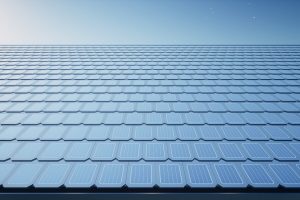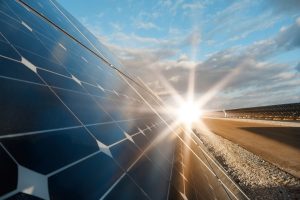
In Central Texas, residential and commercial roofing is being transformed by the growing appeal of energy efficiency and sustainability. As the sun blazes over, more property owners are asking one pertinent question: at what point does the shift from traditional to solar roofing start to make financial sense?
The region is witnessing an upward trend in the adoption of solar roofing systems, spurred by an increased awareness of their long-term economic and environmental benefits. Traditional roofing solutions, while still prevalent, are gradually being reevaluated by cost-conscious and green-minded Texans.
Both the desire to reduce environmental impact and the opportunity for energy cost savings compel homeowners and business owners to consider solar roofs. With energy rates fluctuating and ecological concerns rising, the case for solar becomes not just a matter of principle but also of fiscal prudence.
Understanding the Costs of Traditional Roofing
Traditional roofing systems have been the standard for Texan homes and businesses, offering reliability and a well-understood pricing structure.
The initial cost of installing a traditional roof varies depending on material and design, but it’s often the longevity and maintenance that accrue additional expenses over time. From periodic shingle replacement to weatherproofing treatments, these ongoing costs must be considered in any cost analysis.
Traditional roofs typically last anywhere from 15 to 30 years before requiring a full replacement. Factors influencing this lifespan include material quality, installation expertise, and exposure to harsh weather conditions, which can be particularly extreme in Texas.
While traditional roofs might offer lower upfront costs, they generally lack the energy efficiency of modern roofing technologies. Poor insulation and reflectivity can lead to higher air conditioning needs, driving up energy consumption and costs during those hot summers.
Solar Roofing – An Overview
Adopting solar roofing is a forward-thinking choice that often represents a higher initial investment but promises considerable long-term savings and other financial benefits.
While the upfront installation costs of solar roofing systems are typically greater than those of traditional roofs, the long-term outlook tells a more nuanced story. This upfront cost includes not only the solar panels but also inverters, batteries for storage, and a potential roofing update to support the system.
To encourage the adoption of solar energy, the federal government, along with the state of Texas, offers incentives that can substantially offset the initial outlay. These incentives can include tax credits, rebates, and solar renewable energy credits, which can lead to significant savings.
Solar roofing has a reputation for durable construction and long lifespans, with many systems warrantied for 20 to 25 years. These systems typically require less maintenance than traditional roofs, translating into lower lifelong costs and adding to the financial attractiveness of going solar.
The Break-Even Analysis
Understanding when a solar roof will begin to pay for itself is essential for homeowners and business owners considering this option. This is known as the ‘break-even’ point.
The break-even point varies based on multiple factors, such as the system’s size, the cost of installation, energy usage, and local electricity rates. Typically, homeowners in Central Texas can expect to reach this milestone within 10 to 15 years after installation, factoring in the savings on energy bills and incentives.
Several factors impact the financial returns of a solar roof, including the direction and pitch of your roof, local weather patterns, and the presence of shade from trees or other structures. Ongoing advancements in solar technology and changes in energy policy can influence the economic viability of solar over time.
Impact of Solar Roofing on Property Resale Value
A solar rooftop can be more than just an environmental or economic choice; it’s increasingly becoming a valuable asset in the real estate market.
Homeowners who invest in solar roofing are often ahead of the curve, enjoying a unique selling point that can distinguish their property. In the housing market of Central Texas, solar installations are a lure for potential buyers looking for homes that promise lower utility costs and eco-friendliness.
Properties with solar systems have been shown to fetch premium selling prices compared to those with traditional roofs. While the exact premium will vary, studies suggest that homes with solar panels can sell for more, with buyers willing to pay a premium for built-in renewable energy sources.
Prospective buyers are increasingly knowledgeable about the advantages of solar, viewing these systems as upgrades that yield immediate and long-term savings. A solar roof not only cuts energy expenses but also aligns with the growing shift towards sustainable living — factors that can drive up property appeal and value.
Projected Energy Savings with Solar Roofing
The promise of reduced energy bills is among the most compelling reasons to consider a solar roof, especially our sun-rich state.
A solar roof can significantly decrease, or occasionally even eliminate, electricity bills. The specific savings for a Central Texas homeowner will depend on factors like the size of the solar installation, household energy consumption, and the rate of local utilities, but the impact is usually substantial.
Texas’s sunny climate is an ideal match for solar energy harvesting. Homeowners are particularly well-positioned to capitalize on this renewable resource, often resulting in greater energy production and savings than in less sunny regions.
In net metering, surplus energy generated by your solar panels is fed back into the grid, potentially earning you credits on your utility bills. This policy is an additional financial benefit for solar roof owners, further reducing the net cost of electricity over time.
Durability and Longevity – Does Solar Roofing Last?
An in-depth look into the durability of solar versus traditional roofing could be the deciding factor for many considering this investment.
Solar panels are built to endure; they’re resilient against most weather conditions and can last for upwards of 25 years with minimal efficiency loss. This longevity often surpasses that of many traditional roofing materials, promising a longer stretch of service before any replacement is needed.
Leading manufacturers back their solar products with substantial warranties that guarantee performance over a specified period. These warranties safeguard your investment and ensure that any faults in manufacturing or material defects are addressed without additional costs.
Solar roofing systems generally require less maintenance than traditional roofs. When repairs are necessary, the modular nature of solar panels tends to make the process straightforward and relatively inexpensive, ensuring your roof continues to operate at peak performance with minimal disruption.
Assessing Risks
Evaluating the financial risks associated with roofing is crucial for making an informed decision, especially when considering environmental factors particular to Central Texas.
Both solar and traditional roofing systems face challenges posed by Texas’s erratic weather, from scorching heatwaves to hailstorms. It’s imperative to assess how each option stands up to these conditions and the potential financial risk of damage or premature wear.
Roofing insurance is a significant factor when calculating long-term costs and risks. Homeowners should examine how solar roofs affect their premiums compared to traditional roofs, bearing in mind that some insurers offer discounts for solar installations due to their durability and environmental benefits.
Making the Switch
Switching from a traditional to a solar roof is a significant decision that comes with many considerations. Planning and understanding the process ensure a smooth transition.
The journey begins with a detailed energy audit to understand your current and future energy needs, followed by selecting the right solar roofing system. Essential steps include site assessment, choosing the type of solar panel, getting the appropriate permits, and installation by a certified professional.
Not every home is an ideal candidate for solar panels. Factors such as roof orientation, inclination, shade, and structural integrity play a crucial role in determining whether a solar roofing system is viable for your property.
Trusted contractors are key to a successful installation. Look for those with expertise specific to solar roofing systems and a track record of satisfied customers in Central Texas. Your chosen contractor should guide you through every step and handle the complex aspects of the installation process.
Is Solar Roofing the Right Financial Choice?
Navigating the considerations between traditional and solar roofing in Central Texas can be a complex process, yet the financial analysis indicates a clear trajectory toward the latter as a prudent choice in many cases.
The initial investment in solar roofing is balanced by long-term savings on energy costs, potential increases in property value, and the durability of the system. These factors, combined with the financial incentives available, paint a compelling picture of the solar option as a sound investment.
The suitability of solar roofing must be assessed on a case-by-case basis, accounting for individual energy needs, property characteristics, and personal financial goals. For many, the aligned interests of economic savings, environmental responsibility, and energy independence make solar an appealing option.
Transforming your roof from a traditional system to a solar-powered solution can indeed pay off over time. While the transition requires careful planning and investment, the data points toward a brighter, more sustainable, and economically beneficial future for those who switch to solar.
FAQs
What is the average payback period for solar roofs in Central Texas?
The payback period for solar roofs varies based on the cost of installation, the energy production of your system, and utility rates. In Central Texas, homeowners typically see a return on their solar investment in about 8 to 12 years, thanks to the generous amount of sunlight and the available financial incentives.
How do solar roofing systems perform during extreme weather?
Solar roofing systems are designed to withstand the rigors of extreme weather, including high winds, hail, and heavy rainfall. Many solar panels are rated for wind speeds up to 140 miles per hour and come with impact ratings for hail protection. Furthermore, warranties often cover performance in severe weather, giving Texas homeowners peace of mind.
Can I finance a solar roofing system, and what options are available in Texas?
Yes, there are several financing options available for solar roofing systems in Texas. These include solar loans, solar leases, and power purchase agreements (PPAs). Local banks and financial institutions often offer green energy or home improvement loans with favorable terms for solar installations. It’s advisable to consult with a financial advisor or a solar energy specialist to find the best financing solution for your situation.
What’s the maintenance requirements for a solar roofing system?
Solar roofing systems require minimal maintenance, usually involving periodic cleaning of the panels to ensure maximum efficiency. It’s recommended that homeowners conduct an annual inspection to check for any physical damage and to ensure the system is functioning correctly. Many solar providers offer maintenance services as part of their package, which can be a convenient option for busy homeowners.
Are there specific solar roofing brands or products recommended for Central Texas homes?
While there are many reputable solar roofing brands available, selecting a product suited for the Central Texas climate and one that offers a solid balance between efficiency and cost is crucial.
Brands that demonstrate strong performance in high temperature and exposure conditions, and that provide robust warranties, are generally recommended. It’s beneficial to work with a local solar specialist who can provide recommendations based on the specific needs of your property and regional experience.
from: https://mydividedsky.com/when-do-solar-roofs-start-paying-off/


No comments:
Post a Comment